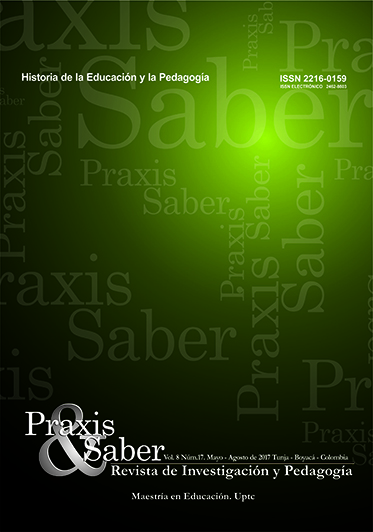Framework For The Educational Apps Development, Based on Models of Teaching

Abstract
The technological advances made in the mobile communication field over the past few years have all contributed to enhance software and hardware specifications. Initiatives such as those launched by the government of Colombia, which pursues the objective of providing official educational institutions with digital tablets, have motivated the actors in the educational process and the teachers’ interest in proposing strategies for incorporating mobile devices into educational contexts. From this point of view, the present research aims to propose a framework which allows combining technological and pedagogical aspects in the educational apps development process, in order to respond to the needs of the educational environment in which they will be incorporated. This document shows the results of the research carried out in four methodological stages: assessment, conceptualization and characterization, proposal and implementation of the framework, and analysis of results.Keywords
mobile devices, agile software development, models of teaching, framework
Author Biography
William Oswaldo Cuervo Gómez
Maestría en Tecnología Informática, Universidad Pedagógica y Tecnológica de Colombia, Colombia Grupo de Investigación: Ambientes virtuales educativos - Ave
Javier Antonio Ballesteros-Ricaurte
Maestría en Ciencias Computacionales, Universidad Autónoma de Bucaramanga, Colombia Ingeniero de Sistemas, Fundación Universitaria de Boyacá, Colombia Grupo de Investigación en Manejo de la Información - GIMI
References
- Android. (2014). Design Principles. Recuperado de http://developer.android.com/design/get-started/principles.html
- Beck, K. (1999). Extreme Programming Explained (1a ed.). Boston: Addison-Wesley Longman Publishing Co., Inc.
- Belloch, C. (2013). Diseño Instruccional. Valencia: Unidad de Tecnología Educativa (UTE), Universidad de Valencia.
- Hashim, A. S., & Ahmad, W. F. W. (2012). A Comparison of Architectures for a Usability-Aware Customized Mobile Learning Management System (CMLMS). Sixth UKSim/AMSS European Symposium on Computer Modeling and Simulation, Valetta, 2012, pp. 511-516. https://doi.org/10.1109/EMS.2012.63 DOI: https://doi.org/10.1109/EMS.2012.63
- Johnson, L., Adams, S., & Cummins, M. (2012). Informe Horizon del NMC: Edición para la enseñanza universitaria 2012. Austin, Tejas: The New Media Consortium. Stanford: The New Media Consortium.
- Joyce, B., Weil, M., & Calhoun, E. (2002). Modelos de enseñanza (1a ed.). Barcelona: Editorial Gedisa.
- Ledo, M. V., Martínez, F. G., & Piedra, A. R. (2010). Software educativos/Educational softwares. Revista cubana de educación médica superior, 24(1), 97-110.
- Martin, J. (1991). Rapid Application Development. New York: Macmillan Coll Div.
- Martínez, A. del C. (2009). Investigación documental: El diseño instruccional en la educación a distancia. Apertura, 10(849), 104-120.
- Nielsen, J., & Budiu, R. (2013). Mobile Usability (1a ed.). Berkeley, CA: Pearson Education.
- Pressley, M., Levin, J., & Miller, G. (1982). The keyword method and children´s learning of foreign vocabulary with abstract meanings. Canadian Journal of Psychology, 35, 283-287. https://doi.org/10.1037/h0081147 DOI: https://doi.org/10.1037/h0081147
- Pressman, R. (2010). Ingeniería del software, un enfoque práctico (7a ed.). México: McGraw-Hill.
- Pulido, D. C., Najar, O. & Guesguán, L. G. (2016). Vivamos la innovación de la inclusión de dispositivos móviles en la educación. Praxis & Saber, 7 (14), 115 - 140. https://doi.org/10.19053/22160159.5220 DOI: https://doi.org/10.19053/22160159.5220
- Robertson, E. L., & Springer, J. A. (2004). Architectural Principles for Enterprise Frameworks. Bloomington: Indiana University.
- Ruiz, J. H., Almanza, L. Á., & Pons, N. L. (2011). Comparación y tendencias entre metodologías ágiles y formales. Metodología utilizada en el Centro de Informatización para la Gestión de Entidades. Serie Científica de la Universidad de las Ciencias Informáticas, 4(10).
- Sampieri, R. H., Collado, C. F., & Lucio, M. del P. (2010). Metodología de la investigación (5a ed.). México: McGraw-Hill/Interamericana Editores, S.A. De C.V.
- Skinner, B. F. (1970). La ciencia de aprender y el arte de enseñar. Barcelona: Editorial labor.
- Stapleton, J. (1997). DSDM, Dynamic Systems Development Method: The Method in Practice, (Cambridge University Press, Ed.) (1a ed.). Boston: Addison-Wesley.
- Szalvay, V. (noviembre, 2004). An introduction to agile software development. Danube Technologies, 3.
- Zachman, J. (1987). A framework for information systems architecture. IBM Journals & Magazines, (26), 276-292. DOI: https://doi.org/10.1147/sj.263.0276
- Zambrano, J., López, G., & Quintero, B. (1998). Método PROSDOS Ampliado: Incorporación del enfoque orientado a objetos en la producción de soportes didácticos. IV Congresso RIBIE, Brasilia 1998, (2).
Downloads
Download data is not yet available.